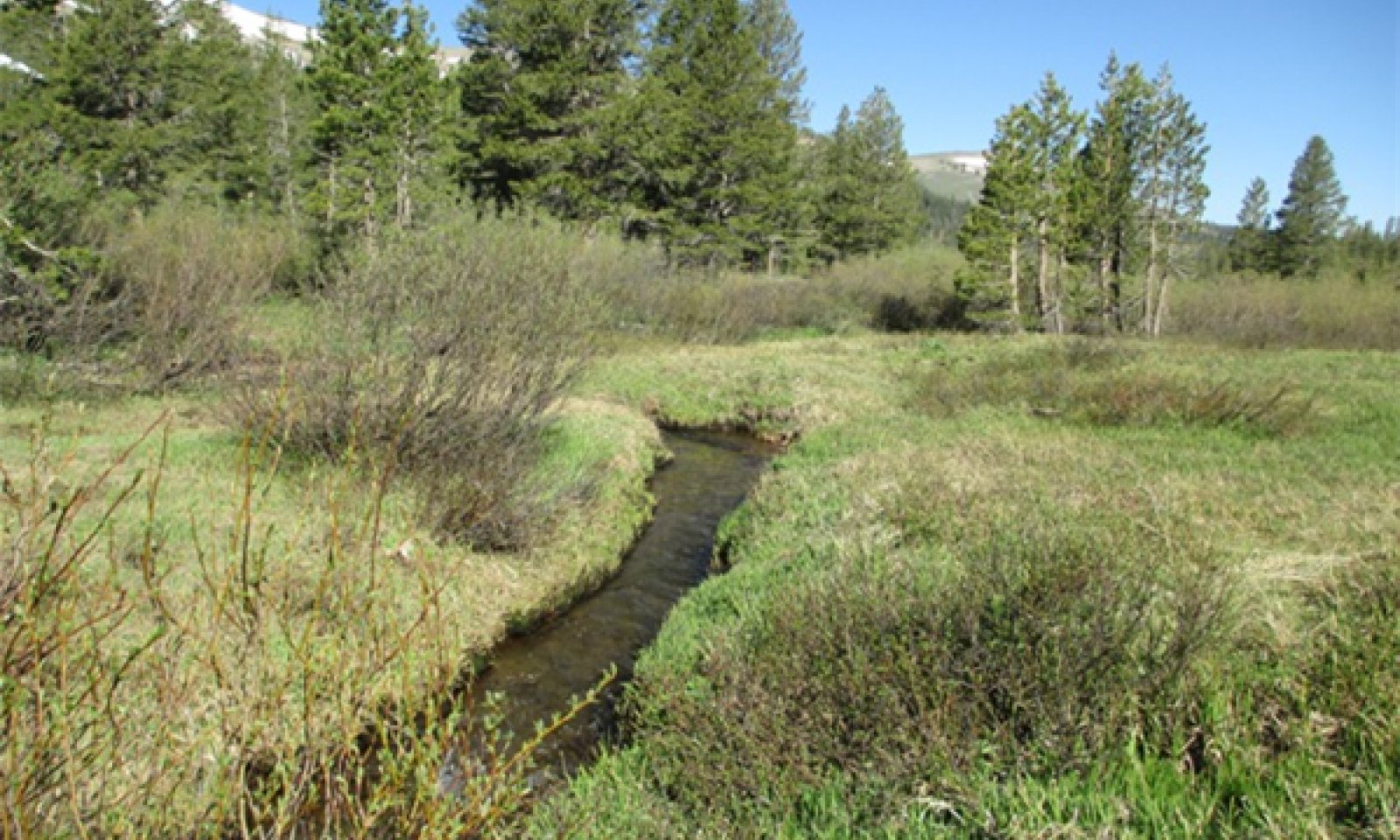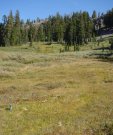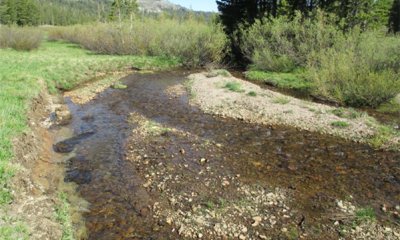
Cryic E Meadow System
Scenario model
Current ecosystem state
Select a state
Management practices/drivers
Select a transition or restoration pathway
- Transition 1.1a More details
- Restoration pathway 2.1A More details
- Transition 2.1a More details
- Restoration pathway 3.1A More details
-
No transition or restoration pathway between the selected states has been described
Target ecosystem state
Select a state
State 1
Reference State





Description
This state is the reference state for this ecological site. It is defined by an E type Rosgen channel.
Submodel
Description
This state is characterized by unstable, entrenched G and F type channel types.
Submodel
Mechanism
This transition occurs when the E and C type channel equilibrium is disrupted. This may be triggered by the loss of channel stabilizing vegetation, either from physical trampling or hydrological alterations that cause the water table to lower and subsequently cause a decline in the stabilizing vegetation. Manipulations such as channel straightening, confining the floodplain, or improperly designed road crossings can also trigger this transition.
Mechanism
Restoration practices to restore channel conditions to state 2, vary depending upon site specific conditions. Removal triggers may allow these streams to stabilize over time. If livestock grazing is permitted in these areas, it would be best to keep them out of the wettest areas of the meadow. Trail and Road networks should be designed so they do not alter the hydrology by collecting or concentrating flow in a channel. Channel redesign may be necessary in some areas to increase channel meander, raise the channel bed level, and reconnect flows with the floodplain.
Mechanism
This transition occurs when the F channel has widened sufficiently to allow for a C channel type to develop with a lower, re-established floodplain.
Model keys
Briefcase
Add ecological sites and Major Land Resource Areas to your briefcase by clicking on the briefcase (![]() ) icon wherever it occurs. Drag and drop items to reorder. Cookies are used to store briefcase items between browsing sessions. Because of this, the number of items that can be added to your briefcase is limited, and briefcase items added on one device and browser cannot be accessed from another device or browser. Users who do not wish to place cookies on their devices should not use the briefcase tool. Briefcase cookies serve no other purpose than described here and are deleted whenever browsing history is cleared.
) icon wherever it occurs. Drag and drop items to reorder. Cookies are used to store briefcase items between browsing sessions. Because of this, the number of items that can be added to your briefcase is limited, and briefcase items added on one device and browser cannot be accessed from another device or browser. Users who do not wish to place cookies on their devices should not use the briefcase tool. Briefcase cookies serve no other purpose than described here and are deleted whenever browsing history is cleared.
Ecological sites
Major Land Resource Areas
The Ecosystem Dynamics Interpretive Tool is an information system framework developed by the USDA-ARS Jornada Experimental Range, USDA Natural Resources Conservation Service, and New Mexico State University.




